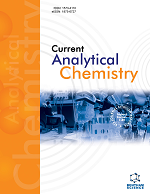
Full text loading...
Ropivacaine is a widely used local anesthetic for managing postoperative pain, particularly in procedures such as caesarean sections. While historically used as a racemate, its structural similarity to mepivacaine and bupivacaine within the pipecoloxylidide group is notable. Both enantiomers of ropivacaine exhibit similar nerve-blocking properties, but the R enantiomer is associated with increased cardiotoxicity compared to the S-Ropivacaine, like bupivacaine. This study aimed to develop and validate precise and rapid chiral chromatographic techniques for quantifying potential (R&S enantiomers).
We used normal phase chromatography with a (3,5-dimethylphenylcarbamate) immobilized-type polysaccharide stationary phase to quantify R&S enantiomers. The method followed ICH Q2(R1) guidelines, employing CHIRAL ART Amylose-SA for determining S-Ropivacaine enantiomeric purity in pharmaceutical drugs. The validation included accuracy and LOQ (limit of quantification) profiles, with measurement error assessments. Linear regression of accuracy profiles post square root transformations set acceptance limits at ±10%.
The method accurately quantified R&S enantiomers, adhering to ICH Q2(R1) guidelines. Validation showed high accuracy and precise LOQ profiles. Measurement error assessments confirmed reliability. Linear regression of accuracy profiles stayed within ±10% acceptance limits, confirming the method's suitability for determining S-Ropivacaine enantiomeric purity.
The developed chiral chromatographic method provides an effective means of quantifying the enantiomeric purity of S-Ropivacaine in pharmaceutical drugs. Its adherence to ICH Q2(R1) guidelines ensures reliability and accuracy in measurement. This method enables precise determination of S-Ropivacaine content, which is crucial for optimizing therapeutic outcomes while minimizing the risk of cardiotoxicity associated with the R enantiomer.

Article metrics loading...

Full text loading...
References


Data & Media loading...

